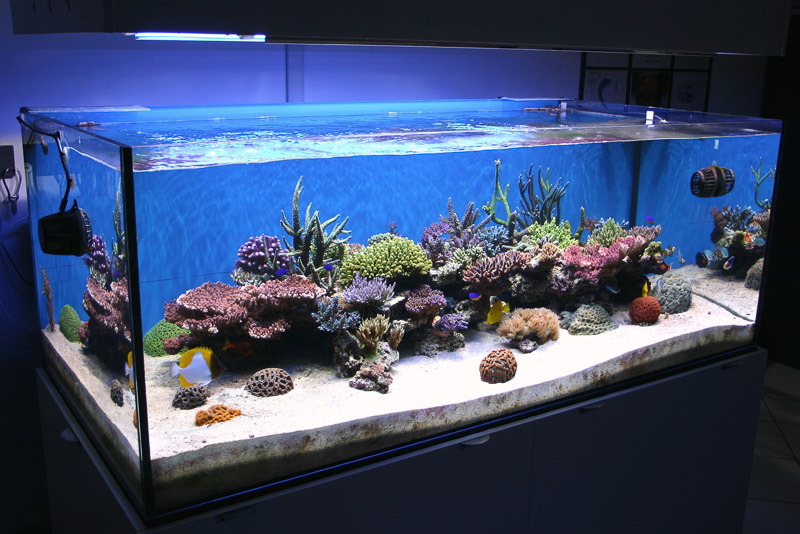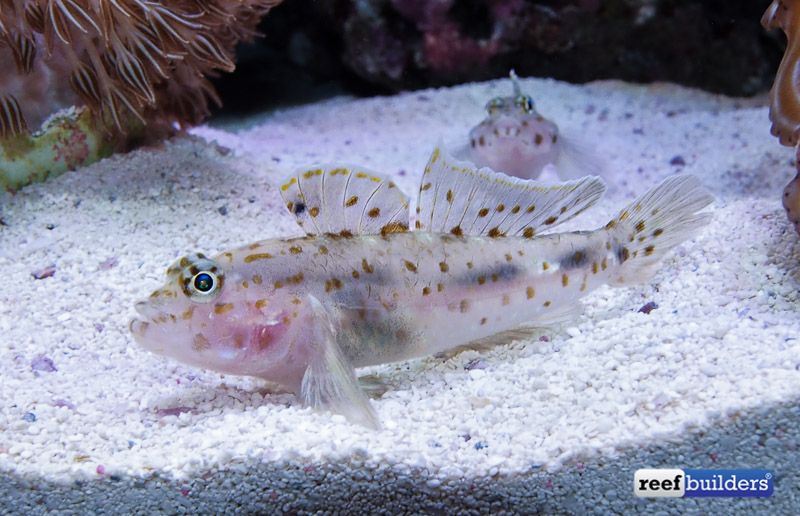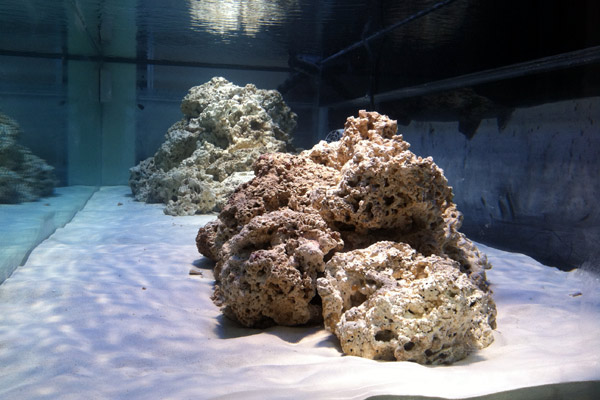Coral sand is one of the first materials that new saltwater aquarium owners add to their tanks. Here we answer your most frequently asked questions on this popular reef aquarium substrate.
Do I need to wash coral sand?
If the sand isn’t live then yes, you need to rinse it in freshwater to remove as much of the fine dust and dirt as you can before you place it in your reef tank and fill the tank with water. Unwashed coral sand will make the water cloudy for a few days after being added.
What is coral sand?
Coral sand is fine, white-colored sand that is made from coral skeletons and shell fragments. It is produced via natural erosion and by the grazing habits of parrotfish around coral reefs in the tropics. It’s calcium carbonate and is generally more coarse than the golden silica sand which more commonly forms beaches. Saltwater aquarium owners use it both as a decorative substrate and as a buffer.
Does coral sand raise pH
Coral sand can raise the pH and hardness of soft freshwater and act as a buffer against low pH and low hardness. It slowly dissolves in water with a pH of less than 8.2. In the average mixed reef tank, many forces are working to degrade and lower pH, (like carbon dioxide,) and a layer of coral sand won’t be enough on its own to stop daily pH swings or to hold reef tank pH on a permanent basis.

That’s why reef aquarists use CO2 scrubbing media in reactors, bring in air from outside that is lower in CO2, and add pH buffers such as Calcium Hydroxide (Kalkwasser,). If you have a softwater freshwater aquarium or a pond, a small amount of coral sand can be used to help prevent pH crashes, but there are better ways to buffer pH in a reef aquarium.
Why is my coral sand turning brown?
The light white surfaces of coral sand grains attract the growth of algae, especially in brightly reef tanks. The brown “algae” are diatoms, and they are very common in newly set up reef tanks. Red slime algae, or Cyanobacteria usually starts on the sand layer, and that’s common too. Use an ICP test to make sure that all the element levels are where they should be and make sure the tank has good circulation. Coral sand always attracts some algae and biofilms, but the brown diatoms should subside as the tank and its microbial populations mature.
Is coral sand living?
Coral sand is limestone that is made up of the skeletons and shells of creatures that were once living, like hard corals, snails, and calcareous algae. Live sand is also available, which is coral sand or aragonite sand that is covered in live bacteria (and a little water,) from the ocean. Live sand is one way to introduce a coral sand substrate and live beneficial bacteria to a new reef aquarium at the same time. With live sand, you should fill the aquarium with salt water of the right salinity and temperature first, and then with all the pumps off, pour it in and let it settle. Washing live sand would kill off and remove the bacteria you would otherwise want to introduce to your aquarium.
How much coral sand do I need?
Most new marine aquarists add too much coral sand. Aim for a layer about one inch thick. With good circulation and sand sifters, it should stay clean and fresh. Any deeper and detritus can build up, causing black, anaerobic patches. A dirty, stagnant substrate also attracts the growth of nuisance algae and cyanobacteria as the dirt is used as a food source. Visit your LFS and lie some bags of sand on the ground, flattening them out to see how far they spread.
What are the benefits of coral sand?
Lots of sea creatures use coral sand to feed, breed, hide, camouflage, and even sleep in. Chalk gobies and Orange spot gobies are adapted to live on and sift coral sand, so by providing them with a bed of coral sand in the aquarium it helps them carry out their natural behavior and provides them with environmental enrichment. Many species of Wrasse like Anampses dive into the sand for protection and sleep in the sand at night, so they need it too, to have a more natural life in our aquariums.

Coral sand coats with beneficial bacteria that can convert ammonia and nitrite into less harmful nitrate, so it can have a biological role in reef aquariums as well as providing a home for the fish and inverts that rely on it in the wild. The light coloration can also reflect aquarium light back up from the base of a tank, helping to illuminate coral bases more evenly.
What are the drawbacks of using coral sand?
Sand can trap dirt like uneaten food, fish feces, and algae, where it breaks down and pollutes the water over time. Modern wave-making pumps can blow sand around, creating deep mounds and bare patches, and fish like Blue cheek gobies take it high into the water column before spitting it out over corals and wave pumps. Nuisance algae like Diatoms and Cyanobacteria tend to start on the substrate and a percentage of reef keepers choose not to add any substrate at all to their reef aquariums for all of the above reasons. A bare bottom reef tank can be easier to keep clean, and easier to manage pests and nutrient levels.
Is coral sand ok for tropical fish?
Coral sand can be suitable for freshwater tropical fish that like hardwater, like Livebearers, Malawi cichlids, and Tanganyikan cichlids. Some aquarists fear its sharp grains and shell fragments, but freshwater fish experience similar substrates in nature with no problems. Avoid coral sand for any freshwater tropical which prefers soft water with a low pH, like Discus and Cardinal tetras.
What is oolitic sand?
Oolitic sand is the name given to fine, sugar-sized aragonite sand from the Bahamas. The oolitic part is the egg shape of the tiny sand grains when viewed close up. In the aquarium, it can form a very pretty substrate layer with good buffering capacity because of the Aragonite. But it can also blow around when exposed to strong flow from wave-making pumps.
How to clean coral sand?
When coral sand is in the tank and established, use a gravel vacuum and siphon tube to hover over it gently, sucking up the dirt from within before dropping the sand back down. Coarser coral sand is easier to vacuum than fine sand, but it can be done with a little practice, and regular vacuuming is a good way to export nutrients, as well as keep coral sand looking fresh, bright, and clean.




